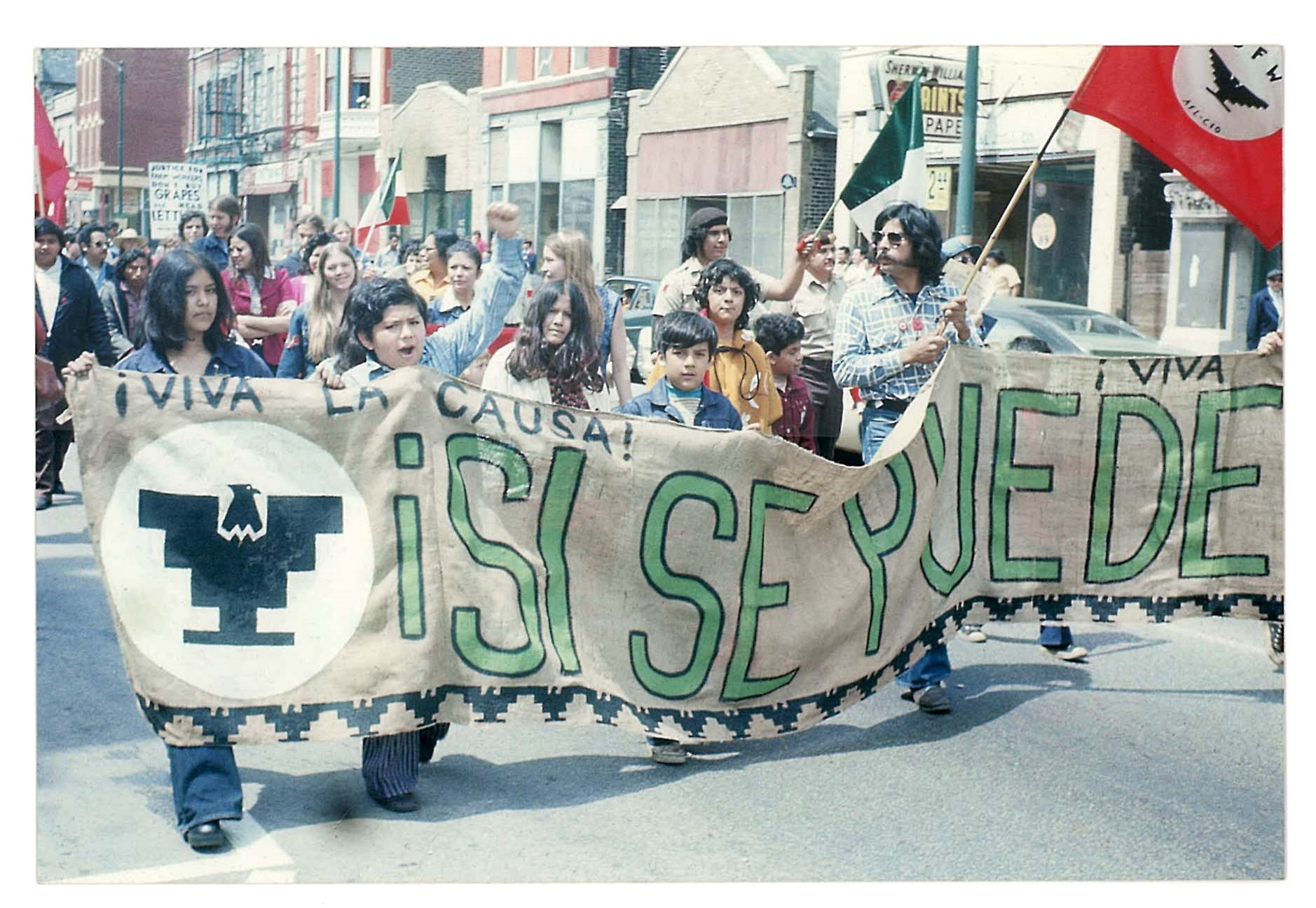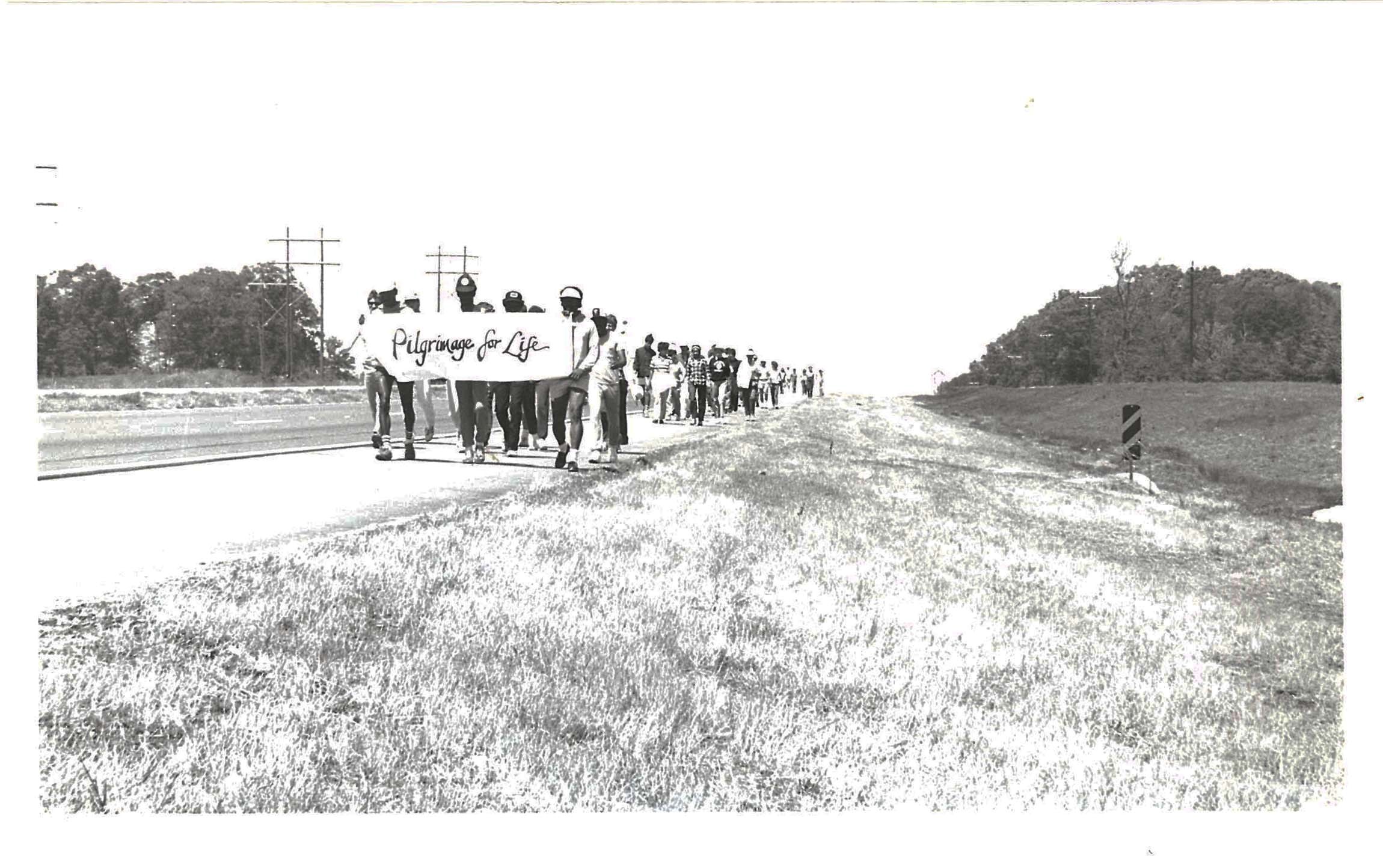 Si Se Puede March, undated. Located in Box 4, Pilsen Neighbors Community Council records. (Image courtesy of Special Collections and Archives)
Si Se Puede March, undated. Located in Box 4, Pilsen Neighbors Community Council records. (Image courtesy of Special Collections and Archives)Special Collections and Archives has written a series of lighthearted New Year's resolution themed pieces over the years, offering fitness tips from Victorian-era sporting books, suggesting the German Turnvereine were on to something with having beer and politics aligned with exercise, and highlighting the humble book cart as a means of exercise and artistic expression. During the pandemic, many turned to wide-open outdoor spaces for their exercise, with hiking and walking becoming popular options for both socializing and a workout. This year's essay highlights stories from SPCA's rare books and archival collections about walking.
Overland journeys on foot are as old as our early human ancestors. Archeological evidence, oral traditions and written histories abound with forced and elective migrations and journeys for food, land, conquest, religion and enlightenment. One of the earlier accounts in SPCA's collections is the Codex Calixtinus de la Catedral de Santiago de Compostela, which includes advice for pilgrims following the Way of St. James, ending at the cathedral of Santiago de Compostela in Spain. The collection, which includes liturgical texts associated with St. James, reports of miracles and musical notations was first compiled in the 12th century. SPCA holds a 1993 facsimile that is a faithful reproduction of the original artifact; the signatures, uneven edges, holes, corrections, marginalia and binding have all been reproduced to give the experience of handling the original manuscript.
Chaucer's Canterbury Tales relates another well-known pilgrimage. In paging through the 1905 facsimile of the 1532 edition held in the British Library, the illustrations serve as a reminder that this was a pilgrimage on horseback, not foot.
Readers familiar with Henry David Thoreau and his wanderings around Walden Pond know walking was both a physical endeavor and a spiritual exercise for Thoreau. In his 1862 essay, “Walking," Thoreau connected the word “saunter" with pilgrimage, with those who go “a la Sainte Terre" – to the Holy Land. Thoreau is credited with influencing American moral and political thought, and with situating walking as a democratic and philosophical endeavor that manifested itself nearly a century later with the marches and protest walks of the Civil Rights era.
These more contemporary civil rights marches and walks are often urban and collective, and exercise free speech along with the physical act of walking. Examples from the University Archives include a 1968 march and vigil against the Vietnam conflict and the draft and a 1990 candlelight peace march for Martin Luther King, Jr. Day, with Martin Luther King III delivering remarks on “unity, equality and increased spirituality."
 Pilgrimage for Life, 1986. Located in Box 84, Sr. Helen Prejean papers. (Image courtesy of Special Collections and Archives)
Pilgrimage for Life, 1986. Located in Box 84, Sr. Helen Prejean papers. (Image courtesy of Special Collections and Archives)The community archives collections held by SPCA focus on social justice, the Catholic Left, and women's and community advocacy organizations. It is not surprising to find evidence of walks and marches in these collections, as activists and ordinary citizens exercised their rights for free speech and assembly, and walked to raise awareness and foster change. Hearkening back to the idea of a pilgrimage, Sr. Helen Prejean and members of Pilgrimage for Life marched across the state of Louisiana in 1986 in a campaign to end the death penalty. Pilgrimage for Life was both an event – a 280-mile walk across Louisiana - and an organization, with the organization later renamed the Louisiana Coalition for Alternatives to the Death Penalty.
The Pilsen Neighbors Community Council serves as voice for the Pilsen community, advocating for social justice, education reform, healthcare, immigration reform and civic engagement. The group has assembled community members for peaceful walks and protests to bring attention to and create change on issues such as immigration, forced school busing, residential housing conditions, loan accessibility and fair funding for education and a quality neighborhood high school. The “Si, se puede" motto -- first popularized by the United Farm Workers of America -- can be seen in photos of various PNCC sponsored events.
Motivations for walking clearly vary and overlap, with benefits and outcomes centered on physical and emotional health, socialization and social change, and religious duty and political impact. To see any of the resources profiled here, walk over to Special Collections and Archives in room 314 in the Richardson Library to experience them yourself. Appointments are currently required .